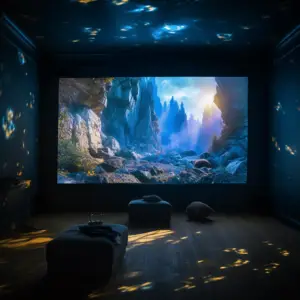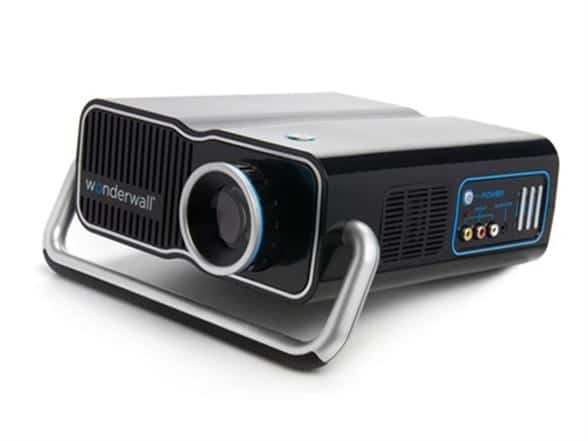Wonderwall Projector Issues, Projecting has become a popular way to watch our favorite movies in the comfort of our homes. The Discovery Wonderwall projector is one of the less expensive ways to project your favorite movies in your home theater.
You can connect devices like DVD players and computers to this projector for a more straightforward viewing of movies and images. The Discovery Wonderwall does, however, experience issues occasionally, just like any other appliance in your house. The most frequent problems with the Discovery Wonderwall Projector will be covered in this article.
Table of Contents
Discovery Wonderwall Projector Problems

Below are some of the problems you are likely to encounter with a Discovery Wonderwall projector:
Hum Coming from the Speakers
The most typical problem with the Discovery Wonderwall Projector is the hum coming from its speakers. The hum tends to increase as the volume increases.
The leading cause of hum in Discovery Wonderwall Projector speakers is faulty wires/ connections.
To resolve this issue, try checking if the wires are well connected. If the hum continues, try replacing the old wires with new ones.
No Picture Coming Out After Plugging Discovery Wonderwall Projector
Another common issue you will likely encounter with a Discovery Wonderwall Projector is the projector not displaying pictures, but the light turns on. All the projector does is go white and produce no sound.
If you encounter this, the issue might be that there is no power where you plug in your projector. Additionally., the switch might be faulty, or the fuse might have blown out.
To confirm whether there is power in the outlet where you plugged your projector, try plugging in another device and see whether it is working. If you suspect the fuse has blown out or the switch is faulty, take your projector to a repair shop to have it checked.
Sound from the Discovery Wonderwall Projector Fan
The fans in the Discovery Wonderwall Projector can sometimes be too loud, making it hard for you to hear the audio.
Obstructions in the fan cause this.
To solve the issue, ensure that there are no obstructions in the fan. Papers, packing peanuts, labels, and Styrofoam may all cause obstructions to the fan. You should consider replacing the fan if there are no obstructions. Also, ensure that the projector has good earthing as poor one may cause the fans to be noisy.
Black Spot in the Middle of the Screen of a Discovery Wonderwall Projector
Sometimes your Discovery Wonderwall Projector might play well for three minutes, and then a black spot appears and grows larger.
If this is the case with your projector, it is probably overheating. The projector cooling fans might be rolling, but they are not cooling it.
To solve the issue, you will have to replace the fans with ones that have a higher speed.
Discovery Wonderwall Projector Not Connecting to Computer
You may also experience issues if you try connecting the Discovery Wonderwall to your computer.
Unfortunately, the projector only has RCA inputs, which are uncommon on most PCs. You’ll probably need to use a different cable or an adapter to use the RCA cable that came with the projector to connect the Discovery Wonderwall to your computer.
The steps to help connect your Discovery Wonderwall Projector to a computer will be discussed in the next section of this article.
How to Connect Discovery Wonderwall Projector to Your Computer
As stated earlier, connecting your Discovery Wonderwall Projector to your computer can be challenging. This is because the projector comes with RCA inputs, which are uncommon on most computers.
However, following the steps below, you can manage to connect the projector to your computer.
Step 1
Ascertain the computer’s video output format. The most popular ones are S-video, DVI, and VGA. You need to buy a cable or adapter that enables you to connect an RCA cable to the type of video-out connector your computer has after you know what kind it has. One ought should be available online for a few dollars.
Step 2
Switch off the projector and computer. Doing this whenever you attach gadgets to your computer is a brilliant idea. If the projector has recently been used, give it time to cool down. This safeguards both you and the internal workings of the projector.
Step 3
Using the proper connection and adapter, connect the computer to the projector. You must also connect an audio link to the computer’s headphone or audio line-out jack if you want to use the projector’s speakers. You’ll need an adaptor if you want to connect a conventional 3.5mm dual male audio cable to the projector’s RCA connection.
Step 4
Start the projector and computer. Your computer’s video output should be set to the external monitor mirror mode. The image on your computer screen will appear on the projector as a result. The “Fn” key and one of the “F” keys at the top of the keyboard are typically used in combination to cycle between the video options.
The particular key changes depending on the type of computer, but it should have an icon of a monitor on it. The video output option is also available in the video settings menu when you access the control panel.
Alternatives to Discovery Wonderwall Projector

Below are some alternatives to the Discovery Wonderwall Projector:
BenQ HT2050A
The BenQ HT2050A is not cheap, but it is the best alternative to the Discovery Wonderwall Projector.
This modern projector creates a vivid image with excellent contrast and true-to-life color accuracy. In addition, it has a vertical lens shift, which simplifies the setup compared to the other equivalent models.
The majority of media players, PCs, gaming consoles, Macs, and mobile devices are supported, and it has a variety of input choices, including HDMI and USB. Additionally, the projector has a 16ms input lag that is low enough for immersive gameplay.
AAXA P8
The diminutive P8 performs far larger than its size would imply. To be honest, the hand-held size can imply that it could even display a picture. However, it only costs $250, has a built-in speaker, and is moderately bright. Impressive.
Both battery and streaming apps are absent from it. You must therefore take that into account. It does, though, contain a USB port and an HDMI input, allowing you to connect a streaming stick and access any streaming programs you might need.


